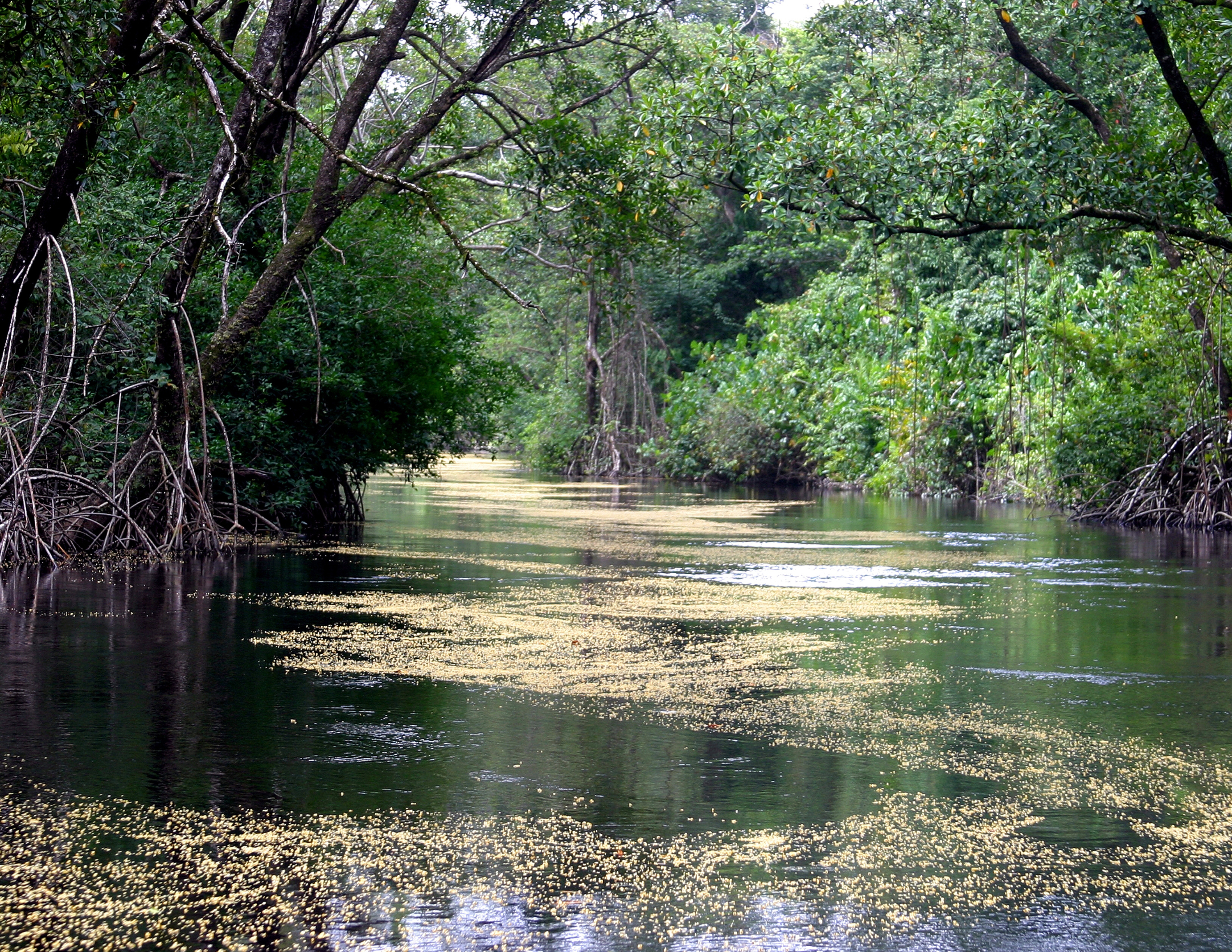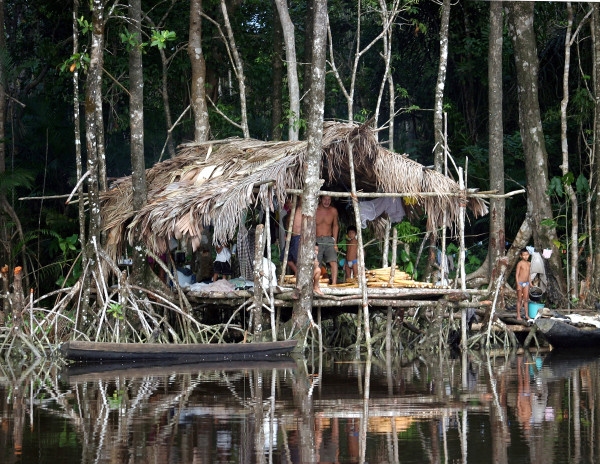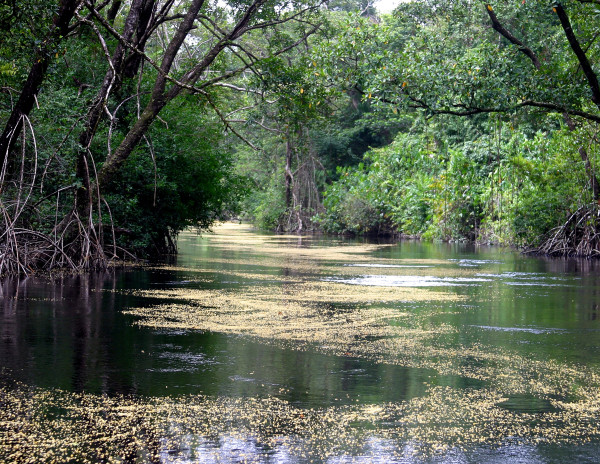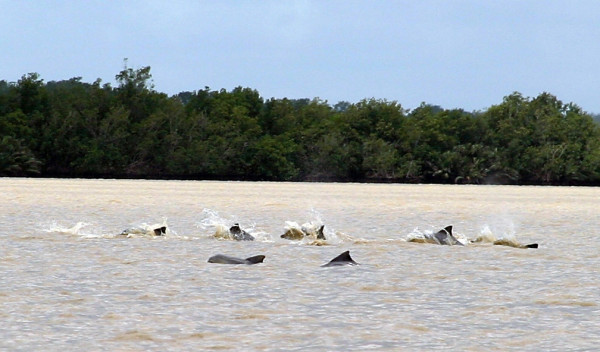At the outset, I’m not a big techno guy. As the new gadgets come out, I’m often one of the last ones to get on board. When I was living in Cayman, I resisted getting a cell phone for quite a while. “What do I need that for?” was my position. But I’ve come around. My cell phone is now nailed to my hip, and I look around and see the many advantages of the new technology.
 Nonetheless, when my wife Annette Arjoon-Martins recently ventured into Facebook territory (it’s completely foreign to me) using her photographs of Guyana taken in recent years, my old scepticism lingered. I’m admitting my surprise at what followed. Virtually overnight, hundreds of people were emailing her about the pictures creating this daily back and forth. Most evenings, and often most weekends as well, she is on the computer dealing with this flood of posting and responding. It’s only been a couple of weeks but the hits so far have been in the thousands. Although originally sceptical about this venture, I’m seeing now that she has tapped into something significant. She’s hearing from a range of people, both at home and abroad, and what is particularly striking for me is the fervour that comes with the interest.
Nonetheless, when my wife Annette Arjoon-Martins recently ventured into Facebook territory (it’s completely foreign to me) using her photographs of Guyana taken in recent years, my old scepticism lingered. I’m admitting my surprise at what followed. Virtually overnight, hundreds of people were emailing her about the pictures creating this daily back and forth. Most evenings, and often most weekends as well, she is on the computer dealing with this flood of posting and responding. It’s only been a couple of weeks but the hits so far have been in the thousands. Although originally sceptical about this venture, I’m seeing now that she has tapped into something significant. She’s hearing from a range of people, both at home and abroad, and what is particularly striking for me is the fervour that comes with the interest.
Part of the reaction is obviously from the pictures themselves. She had invested in a good camera years ago, and she has a good eye for composition. Also, in her work and in her travels, she had been all over Guyana, and her photographs present a wide span of the country. I had worked at B G Airways as a young man here and had seen much of the interior, particularly the Rupununi, but when I first met Annette she was showing me photographs of a Guyana I had never known, and along with the landscapes she had captured much of the varied culture of Guyana including the Amerindian aspect – she is part Amerindian – in vivid colours. I believe, however, that the other part of the appeal is that these pictures, along with her pithy comments, are an antidote to all the depressing “God help Guyana” news one gets in the dailies and in the online sites, and even from letter writers grousing about those subjects. Her postings have nothing to do with dire happenings and irregularities and deficiencies; it’s about the beauty of the country, seldom seen images of parts of it, and of ordinary people going about their lives with spirit and humour; it’s a totally different bag. She does it because she loves this stuff, not as an antidote, but I think that is the effect it has. She is presenting “the other Guyana”; that’s what people are responding to so happily. Several of them have thanked her for bringing them tranquillity at the beginning of the day. Many of them talk about seeing the worth of Guyana, and several who have been away for decades say the pictures are stirring them to finally visit the homeland. Many of them use words to the effect, “I didn’t know Guyana was so beautiful.” Among the many photographs that draw comments is a shot of dolphins cavorting in the Waini River mouth; many Guyanese, myself included, don’t know we have those. Actually I think she has a tiger by the tail (she is now planning to soon include some GoPro video footage she is currently shooting) but so far she’s dealing with the flood on Facebook – Annette & Dave Martins: Is We Own.
Apart from banishing the last dregs of my technology scepticism, this experience has also confirmed for me what I have often contended – that the picture of Guyana that comes to us through the media, and even from personal exchanges, is usually one consumed with the various ills of our society, public and private, and that the appetite for the positive side is consequently not being met. Admittedly, the media business is predicated on the “bad news is good news” business approach, but there is a place for “the other Guyana” and efforts to present that are going to find that there is a powerful market for such an approach made up of people, here and away, who are drawn to such fare. As Annette says, “Social media has a reach far beyond daily media, and some of the likes have come from Guyanese in Australia, Alaska, Dubai and Sweden, to name a few.”
Of course, one could posit that all this is just wishful thinking. That the “other Guyana” of Annette’s photographs is a selective look, through rose-coloured glasses, at what the country could be – with the litter all tucked away somewhere; with the houses scrubbed clean, and the children in pretty clothes; with the streams all flowing serenely between the shores. And ultimately, while that may be so, it is probably precisely what is drawing those persons who take comfort and hope from the pictures; they are coming to them as an illustration of what is possible, of what could be. In the end, with the appeal of the idea and the span of the technology generating it, that may be the best function one could ever envision.









